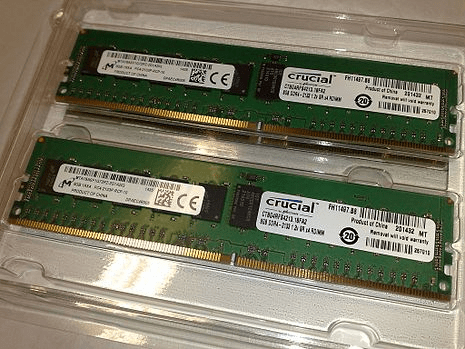What is RDIMM?
Servers use the RDIMM (registered memory) kind of memory chip most frequently. By reducing the electrical strain on a memory controller, it helps systems running on a server be more stable and scalable. Because the added durability and scalability come at a higher price, RDIMMs are often found in servers rather than desktop or laptop PCs. In registered memory modules (also known as buffered memory modules), there is a register between the DRAM modules and the system memory controller.
They reduce the electrical strain on the memory controller and make it possible for single systems to support more memory modules than they otherwise could. Conventional memory is typically referred to as unbuffered memory or unregistered memory when compared to registered memory. A registered memory module is referred to as an RDIMM when it is produced as a dual in-line memory module (DIMM), while unregistered memory is referred to as UDIMM or simply DIMM.

Performance
Typically, employing registered memory results in a performance hit. Since each read or write is queuing for one cycle between the memory bus and the DRAM, the registered RAM can be thought of as functioning one clock cycle behind the comparable unregistered DRAM. This only holds true for the first cycle of a burst in SDRAM. This performance fee, though, is not always applied.
Memory access speed is influenced by a wide range of other factors. For instance, the Intel Westmere 5600 series of processors divide memory access across three channels utilising interleaving. The maximum memory bandwidth for 2DPC (DIMMs per channel) systems with UDIMM is reduced by about 5% in comparison to RDIMM if two memory DIMMs are used per channel. [Required citation][2] (p. 14). This happens because "the memory controller employs a 2T or 2N timing for UDIMMs Due to the substantial electrical strain on the address and control lines when using two DIMMs per memory channel In order to account for settling time, every command that ordinarily requires one clock cycle is extended to two clock cycles.
Compatibility
On most cases, the motherboard and memory must be compatible; hence, registered memory won't function in a motherboard not made for it, and vice versa. Even though registered and unregistered memory modules cannot be mixed, some PC motherboards accept or demand registered memory. [3] Although registered memory, which also supports ECC and is referred to as ECC RAM, has compatibility issues when used in PC motherboards without ECC support, ECC memory which may or may not be registered, is commonly accepted will not function at all in such motherboards, not even without providing the ECC functionality.
Uses
Compared to UDIMMs, RDIMMs offer superior stability, scalability, and reliability due to lower electrical loads on memory controllers. Given the level of performance offered, RDIMMs are more expensive than UDIMMs. As a result, servers that require high-capacity, high-performance RAM typically employ RDIMMs.
RDIMMs are usually quicker
By incorporating a register on the DIMM to buffer the address and command signals between each of the Dynamic Random-Access Memory (DRAM) modules on the DIMM and the memory controller, registered DIMMs improve signal integrity. The quantity of memory the server can support is significantly increased because each memory channel may now make use of up to three dual-rank DIMMs. Partial buffering somewhat increases memory latency and power consumption with RDIMMs.
You probably want to know what "dual-rank" implies, so let me explain what "rank" is. The number of 64-bit data chunks on a DIMM determines its rank. Single-rank DIMMs can be thought of as having DRAM on one side of the chip, resulting in one 64-bit piece of data. Dual rank DIMMs with DRAM on both sides typically have a 64-bit data chunk on each side. There is even a quad-rank DIMM with two 64-bit data chunks on each side of the DIMM.
The graph below compares the latency of RDIMMs and LRDIMMs on a Hewlett Packard Enterprise (HPE) Proliant Gen9 2 socket server with two Intel Xeon E5-2600v4 processors in order to show the differences between these two memory types. You'll see that RDIMMs and LRDIMMs with higher capacities have lower loaded latency than RDIMMs and LRDIMMs with only one rank (1Rx8). This is so that the processor can't parallelize the memory requests from the CPU as efficiently as it can with modules with two or more ranks.